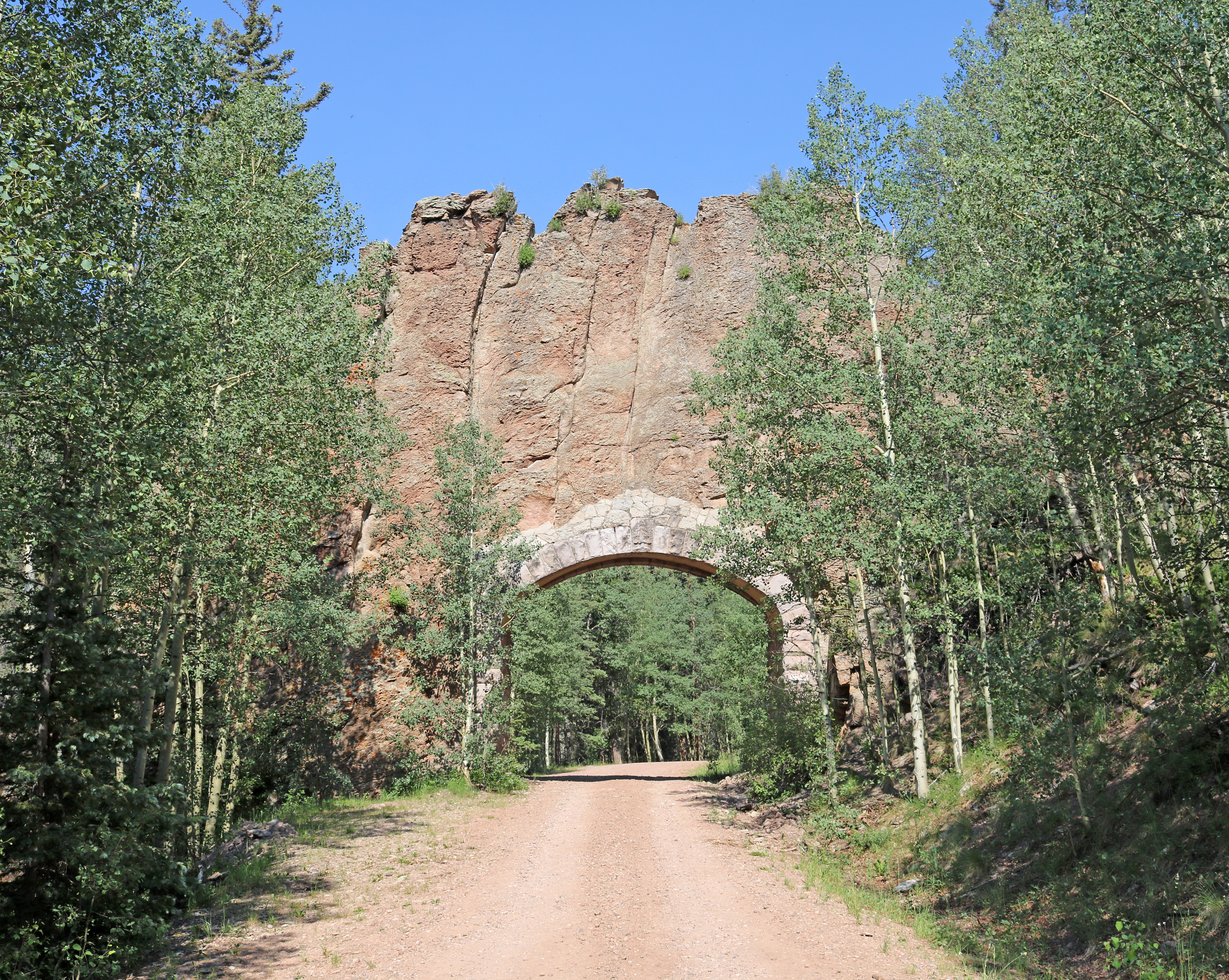Spanish Peaks Wilderness on:
[Wikipedia]
[Google]
[Amazon]
The Spanish Peaks Wilderness is a
 Among the most unusual features of the Spanish Peaks are the great dikes which radiate out from the mountains like spokes of a wheel. These walls of rock are often spectacular. They are easily visible from the highway north of the peaks (and west of Walsenburg), and pictures of them have been used as type examples in more than one introductory geology textbook. Several can be easily seen up close on back dirt roads, and one (Apishapa Arch) on the south side of the peaks can actually be driven through.
Among the most unusual features of the Spanish Peaks are the great dikes which radiate out from the mountains like spokes of a wheel. These walls of rock are often spectacular. They are easily visible from the highway north of the peaks (and west of Walsenburg), and pictures of them have been used as type examples in more than one introductory geology textbook. Several can be easily seen up close on back dirt roads, and one (Apishapa Arch) on the south side of the peaks can actually be driven through.
wilderness area
Wilderness or wildlands (usually in the plural) are Earth's natural environments that have not been significantly modified by human activity, or any nonurbanized land not under extensive agricultural cultivation. The term has traditionally ...
in Huerfano County and Las Animas County, Colorado
Colorado is a U.S. state, state in the Western United States. It is one of the Mountain states, sharing the Four Corners region with Arizona, New Mexico, and Utah. It is also bordered by Wyoming to the north, Nebraska to the northeast, Kansas ...
, United States
The United States of America (USA), also known as the United States (U.S.) or America, is a country primarily located in North America. It is a federal republic of 50 U.S. state, states and a federal capital district, Washington, D.C. The 48 ...
, located southwest of Walsenburg. All of the wilderness area is located within San Isabel National Forest, which is managed by the U.S. Forest Service.
Geography
The Spanish Peaks () are prominent landmarks along the eastern front of the southern Rockies. Their snow-capped summits of the East Spanish Peak and the West Spanish Peak, rise above the arid plains, made the "Double Mountain" an easily recognizable reference point to travelers of all cultures. The West Spanish Peak with an elevation of , overtops the East Spanish Peak which only has an elevation of . However, this difference is not readily discernible from a distance.History
The Peaks have traditional and religious significance to American Indian tribes including the Apache, Comanche, and Ute. The common Indian name appears in at least three different spellings in various accounts, reflecting different renditions of oral expression. These are "Wahatoya", Huajatolla" or Guajatoyah". This is widely reported to be a Ute name meaning "breasts of the earth", but is in fact a Comanche name translating to "double mountain".Geology
The Spanish Peaks are geologically distinct from the faulted and uplifted mountains of the Sangre de Cristo range to the west. To the geologist the Spanish Peaks are prime examples of "stocks
Stocks are feet and hand restraining devices that were used as a form of corporal punishment and public humiliation. The use of stocks is seen as early as Ancient Greece, where they are described as being in use in Solon's law code. The law de ...
" which are defined as large masses of igneous (molten) rock which intruded layers of sedimentary rock and were later exposed by erosion. When mapped by geologists the Peaks were found to be masses of granite
Granite ( ) is a coarse-grained (phanerite, phaneritic) intrusive rock, intrusive igneous rock composed mostly of quartz, alkali feldspar, and plagioclase. It forms from magma with a high content of silica and alkali metal oxides that slowly coo ...
, granodiorite, and syenodiorite.
References
External links
{{Authority control Protected areas of Huerfano County, Colorado Protected areas of Las Animas County, Colorado Wilderness areas of Colorado Protected areas established in 2000 San Isabel National Forest